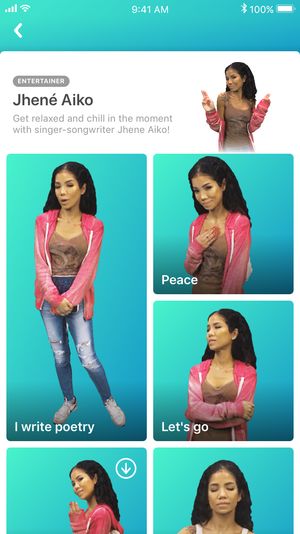[symple_box style=”boxsucces”]
Appolicious: Augmented reality is blooming as a medium, and truly 3D, spatially consistent holograms are a big step forward for it. However, that’s not just something you spontaneously choose to create. So, take us through the process – what sparked the idea for Holo with ARKit?
[/symple_box]
Andrew Tokeley: Holo started its life running on phones powered by Google Tango technology. These phones had additional cameras and hardware that enabled the sort of tracking we’re seeing in ARKit apps today. We subsequently ported the app to standard smartphones to enable greater reach, but users didn’t get the magic of being able to walk around the holograms. We couldn’t wait to work with ARKit and bring this capability along with truly volumetric human holograms to the masses.
[symple_box style=”boxsucces”]
APP: How did the team approach exploring and developing Holo? What challenges did the 8i development team face?
[/symple_box]
AT: There really are no established standards for building AR apps, which is both liberating and a challenge for app designers. How should objects be placed? Moved, resized, rotated? We’ve done a lot of experimentation and research and are really pleased with where Holo is at and the success it has achieved. This exploration continues to give us insights into AR user behavior and patterns and we’re keen to share these learnings with our partners and the AR app developer ecosystem.
[symple_box style=”boxsucces”]
APP: How do you capture the holograms for Holo with ARKit? You’re practically creating a life-sized gif.
[/symple_box]
AT: 8i transforms video into photo-realistic holograms using volumetric capture and proprietary volumetric video technology. Using an approach called Volumetric Capture, we record video of a human performance from various viewpoints with an array of cameras. Our cloud-based volumetric video software analyzes the video streams and reconstructs a high fidelity photoreal human hologram with full depth and volume, enabling complete freedom of movement so you can view the hologram from any perspective. Our codec compresses the hologram so it can be played back across any device or platform for virtual, augmented or mixed reality.

[symple_box style=”boxsucces”]
APP: How versatile is Holo?
[/symple_box]
AT: Holo is as versatile as the imagination of our users! We’re releasing new holograms each week and love seeing how people use them. The same hologram can tell a completely different story – change its location, make it tiny or huge, add a real human to the shot. It’s like being the director of your own movie. While Holo is a fun use case of 8i’s volumetric video technology, we expect a broad range of immersive AR apps will be delver volumetric human content – from education, entertainment and ecommerce to communication, media and experiences we haven’t yet imagined.
[symple_box style=”boxsucces”]
APP: What other applications do you see Holo with ARKit being used for?
[/symple_box]
AT: At the moment, we want to keep Holo with ARKit simple. It’s already a great way for our partners to reach a growing audience in an innovative way. Our real goal here is to take the technology and learnings that are the foundation of Holo and help others to create their own AR apps and experiences.
[symple_box style=”boxsucces”]
APP: What was the moment where everything -clicked-? Where all the team’s hard work came together.
[/symple_box]

AT: There have been many moments! Most recently it was preparing Holo for the launch of iOS 11 and ARKit. Everything moves fast and in a very short space of time our NZ and US-based teams had to join forces. We made all our deadlines, it looks great, nothing broke, the stars aligned. It’s also been incredibly rewarding to work with our amazing content partners. After all, it’s the holograms that make the experience so delightful for users – whether it’s making their own mini AR movies with Spider-Man or Jon Hamm, taking a selfie with Jerome Boateng or Jhene Aiko, dancing with the MTV VMAs Moon Person or Glee’s Harry Shum, or simply chilling with Lola the tiger, our own original hologram which remains one of our most popular one to date.
[symple_box style=”boxsucces”]
APP: Why do you think augmented reality is finally achieving broader attention? Is virtual reality helping? Has the tech in smartphones finally caught up with developer needs? Something else?
[/symple_box]
AT: For better or worse, staring at your smartphone has been normalised across the globe. It immediately removes the social awkwardness of having to don a headset or pair of over-sized glasses, and people can experience the latest in AR tech without the discomfort … This combined with phones being able to crunch through more numbers than ever before is giving AR a real chance of gaining more traction.













